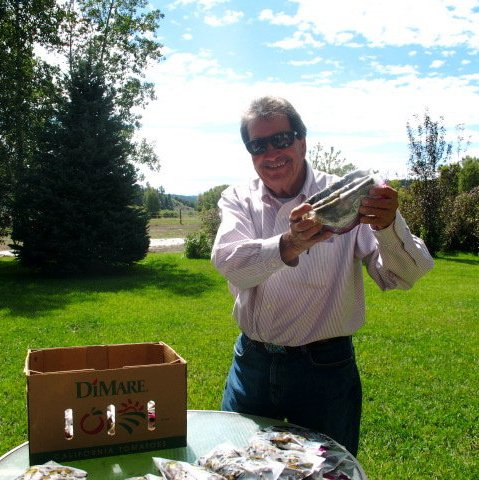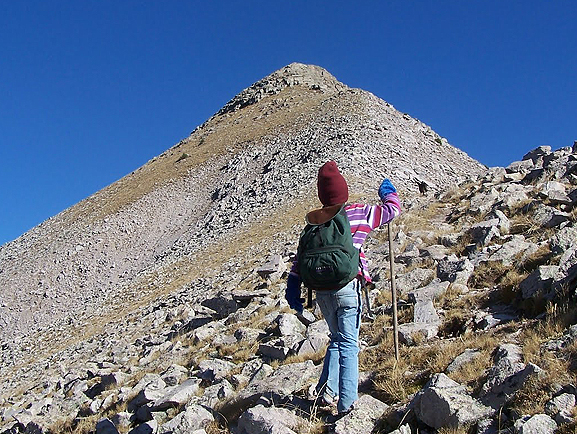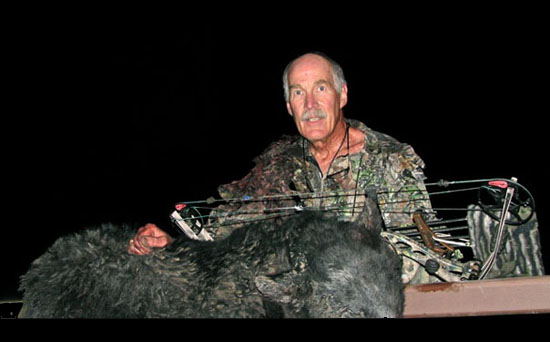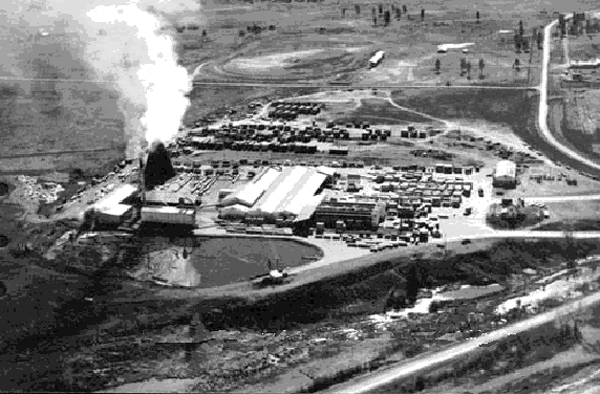Dr. Mary Fisher: Pagosa’s Historic Heroine
![]()
by Norm Vance and Kate Terry
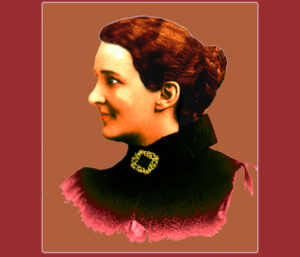 Of the early pioneers who came to Pagosa Springs, one stands out in history above all others. Dr. Mary Fisher is referred to by citizens who remember her and in documents written in her time with love and the greatest respect. Mary Fisher is the historic heroine of Pagosa Springs.
Of the early pioneers who came to Pagosa Springs, one stands out in history above all others. Dr. Mary Fisher is referred to by citizens who remember her and in documents written in her time with love and the greatest respect. Mary Fisher is the historic heroine of Pagosa Springs.
Mary was born in Illinois in the winter of 1868 to John S. and Mary Winter. Her mother died just six months after her birth. She was evidently born strong of nature and set herself apart from the norm at an early age. At a time when women were expected to limit themselves to “womanly roles,” young Mary Winter graduated medical college in Chicago.
Mary’s father was a man of social standing, high moral character and believed in education for his children. He was a journalist in Louisville, Kentucky, who left the south just before the Civil War started, and served as a judge. Judge Winter raised five children, the last of whom was Mary, nicknamed Mamie.
It has long been reported that Mary graduated from Rush Medical School. However, it has recently been discovered that while Mary probably did attend classes at Rush, she actually graduated from Hahneman Medical School as a Doctor of Homeopathy and Surgery. Homeopathy is the art of healing using minute extracts of natural substances. In Mary’s time, homeopathy was as normal a medical practice as the science of compounding drugs was in its infancy. Homeopathy still has a strong following.
Practicing medicine in Illinois evidently did not satisfy Mary’s independent nature. As a twenty-eight year old, single woman in 1895, she ventured west and into the San Juan Mountains at a time when this area was as remote as any part of the United States. It is reported in a hometown area newspaper article that she left the Chicago area for Creede, Colorado, and, in her obituary, that she came to La Hara. Creede is over the San Juan Range to the northeast of Pagosa and was a mining district. La Hara is a farming area over the San Juan Range to the southeast.
An older sister preceded her and was a teacher. For an unknown reason, the sister could not finish the school term and Mary stood in for her. Shortly after this, Mary came to Pagosa. If Mary sought adventure and romance, she soon found both. Day to day living in the Pagosa area at the turn of the century was adventure in its own right, and Mary found romance with J.P. Fisher, the town druggist. On Christmas Eve, 1902, they were wed.
“Dr. Mary,” as she was soon known, developed a statewide reputation for her skill and sound judgment in diagnosis and treatment, and seldom was her professional opinion questioned. Among the local population she developed a reputation for more than skill and judgment, however. At her death, her obituary was twenty-four inches long and stated that everyone felt that they had “personally lost a family member.”

Mary had an office in Pagosa Springs, but was commonly seen riding a horse and buggy out dirt trails to do home visits. When the trails became too narrow and dangerous for the buggy, she saddled up and went by horseback. It was said that “no road was too long or too rough for Dr. Mary to travel.”
Imagine for a moment, the life that young Mary entered and lived. Chicago and the east were caught in the frenzy of a technical boom. Her urban contemporaries were putting around in motor cars, flying through the air, and seemingly producing marvelous new inventions daily. Mary chose to leave this excitement behind.
At that time, the way to Pagosa Springs from the outside world was from the San Luis Valley over Cumbres Pass to Chama or Lumberton by narrow gauge railway or horse drawn coach. From New Mexico it was a long horse or buggy ride to Pagosa. From Chicago’s brick paved boulevards, Mary watched as the path under her feet became ever narrower until, at last, she entered Pagosa Springs on a rocky, bumpy trail barely wide enough for buggies to pass.
The side trails, many of which are now forest access and county roads, were narrower and rougher yet. The mountains were crisscrossed by stock driveways for moving sheep and cattle, and horse trails followed the river up to and over the Continental Divide north and east.
Pagsoa was a town that hummed along to its own tune. The railway and the activity that went with it bypassed Pagosa going a more southern route from Chama to Durango. Pagosa had been a major trail stop for wagon trains with supplies and people traveling to the western San Juan area. During Mary’s time, the railway took away much of this business and Pagosa became a ranching and logging community.
This was the world that Mary Fisher chose for herself. From all the evidence, she joyfully thrived on it. She was known as an avid observer and lover of the beautiful nature of the area. At times, the need to visit a patient was cause for an outing by buggy or horseback shared with her husband or friends.
Mary was a unique woman beyond her medical practice. She had a pet wolf, which was likely protective company as she went on horseback into distant mountains, and she was also well known for her pet bear named Pickles. She once traveled back to Chicago for a visit and took Pickles with her, displaying him at the Chicago fair. Later, back in Pagosa, Pickles lived out his years wrestling miners and cowboys in the local saloons.
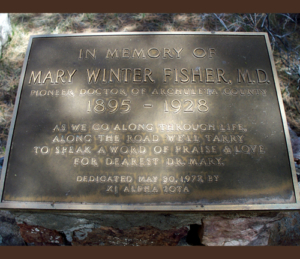 It was her willingness to go anytime and any place to care for a patient that won her legendary status. Many stories are still told by local families of Dr. Mary traveling in blizzards, deep snow and other poor conditions to provide medical service.
It was her willingness to go anytime and any place to care for a patient that won her legendary status. Many stories are still told by local families of Dr. Mary traveling in blizzards, deep snow and other poor conditions to provide medical service.
One account of wilderness travel was given by Jule Macht who traveled by horseback with Dr. Mary up and over the Continental Divide in the rugged area of Pagosa Peak. She went there to give medical attention to a sheep herder tending his flock in the high country.
On another trip of mercy and healing, Dr. Mary had trouble with her horse, was thrown off and landed on her chest. The severe impact caused a lump to develop in Mary’s breast. She kept her concern from everyone except for Jule, who remembered that Mary considered going to the famous Mayo Brothers Hospital back east for a “checkup,” but didn’t because she had a local patient too ill to leave unattended.
In later times, the lump, which was cancerous, became enlarged and Mary treated herself while continuing her medical practice for sixteen months until she could go no more. She then told her husband and close friends of her illness. Her obituary states that, “Though skilled physicians from far and near, attesting their great admiration for her, tendered their services in her behalf, she refused them all stating that her illness was beyond medical assistance. As she shielded her affliction, she likewise prescribed for herself and personally dressed the cancer daily.”
The following is from a short history about Dr. Mary Winter Fisher written by Ila Montroy:
“No person was ever more loved nor more mourned than Dr. Mary. She never faltered in her loved profession, whether by night or day, fair or stormy weather, duty always came first during her long term of service. She needs no epitaph, no slab of marble or granite, for her daily task of mercy, charity and love will ever be a monument to a great and noble woman.”
Mary Winter Fisher passed away on May 30, 1928 at the age of 61. It is a loss shared by all that we cannot know Mary Winter Fisher personally, but from the way she was held in reverence and genuinely loved, we can conclude that she was a most kind, friendly and charismatic woman.

